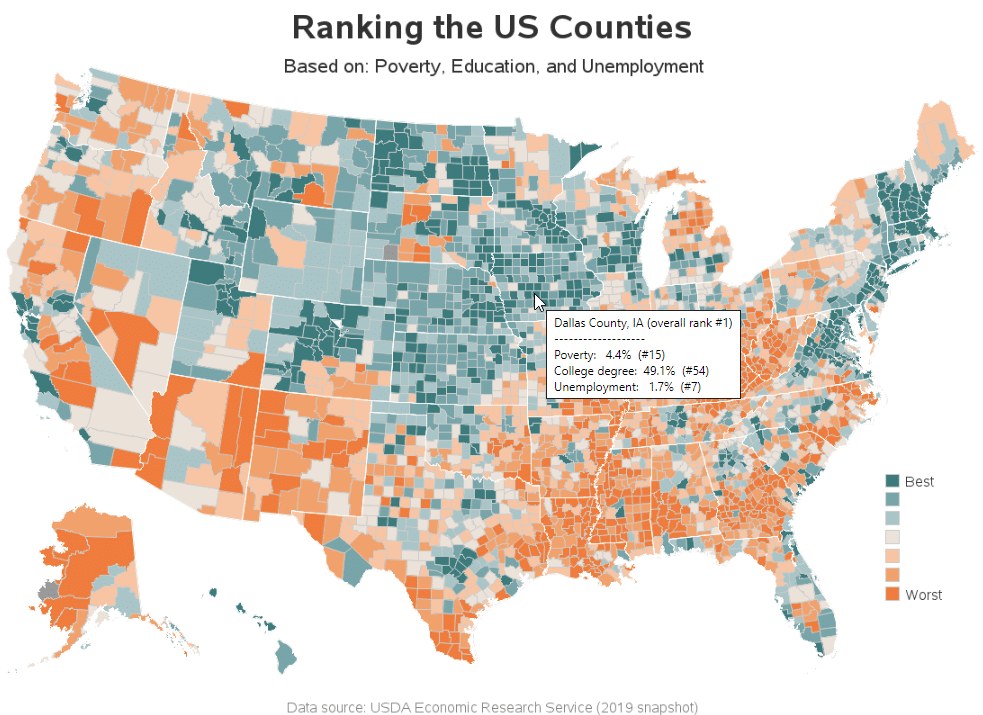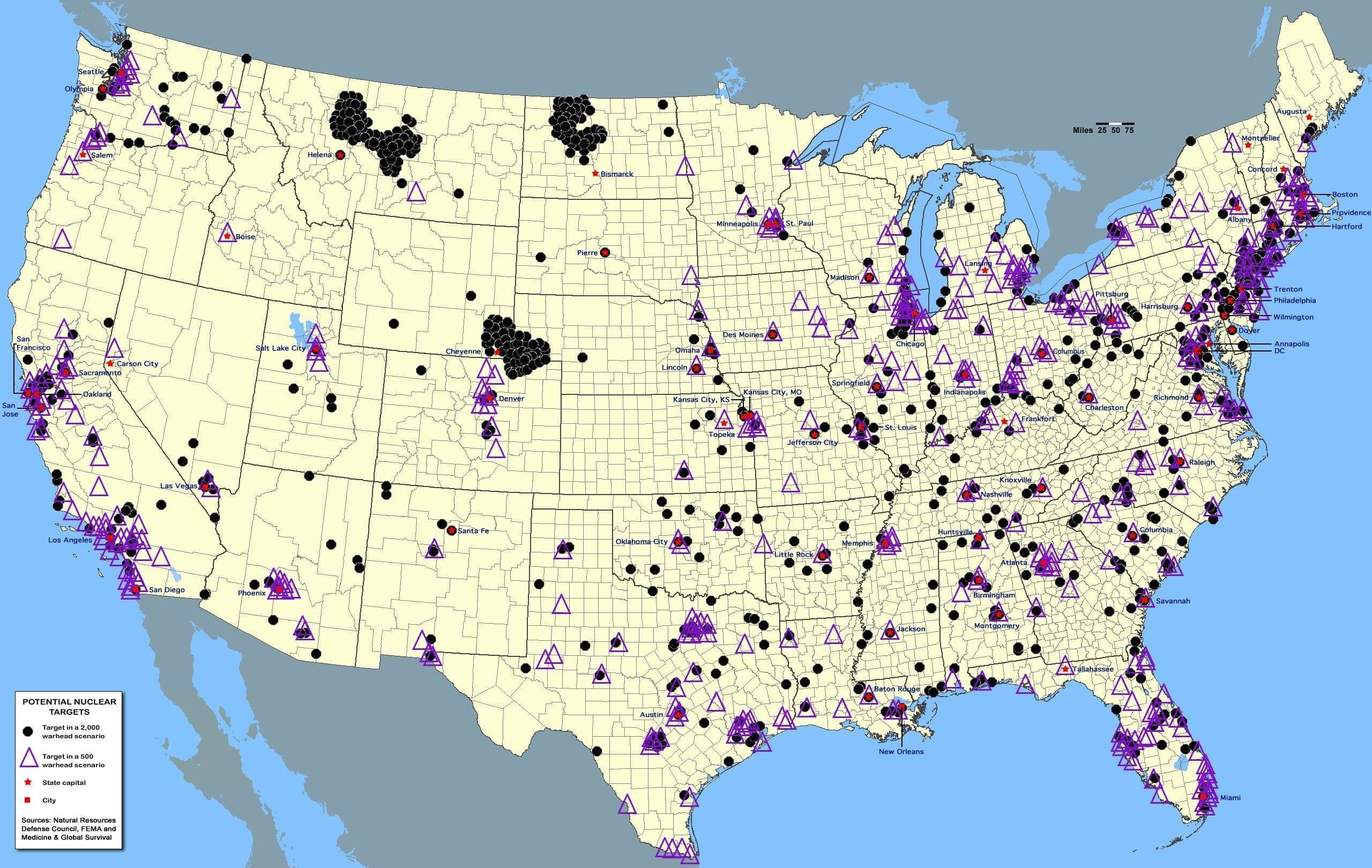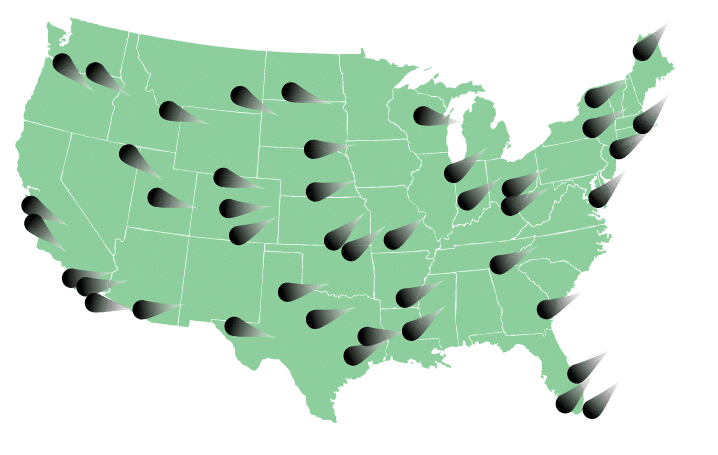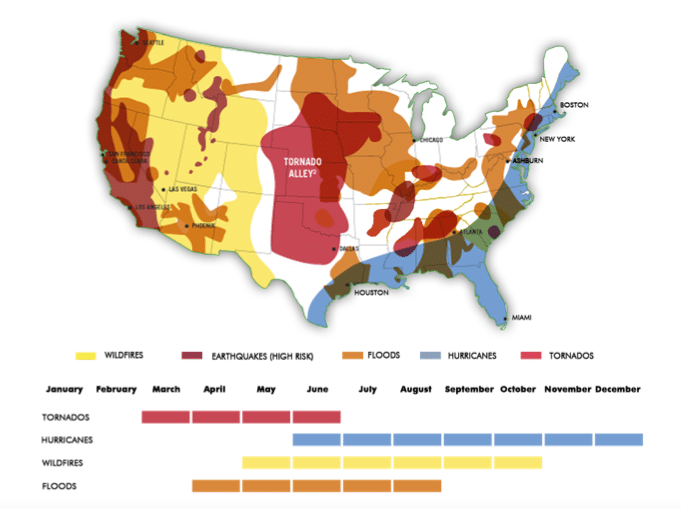To the Prepper
We all live in certain places. Some people get their houses by inheritance and decide not to change anything. Others buy their own houses and settle down in the places they choose on their own. Anyway, if you are reading this article, most likely you do have a place of living somewhere.
But if you are a real survivalist, you know that one of the most important features of overall emergency preparedness is having a home in a safe place. That’s exactly what we will talk about today—as the title claims, about strategic relocation.
Have you ever heard about such an author as Joel Skousen? If you have, you probably know his book “Strategic Relocation. North American Guide To Safe Places”. But that’s ok if you don’t—we will discuss it at the end of the article.
What is strategic relocation? Strategic relocation refers to choosing the safest place among all the possible options available. It is strategic because you have to think carefully (strategically) before moving to a different house. Remember, from this point, and you are responsible not only for yourself but also for the lives of your family members.
It does not matter if you are worried about the potential End Of The World or not (but maybe you should be at least a little bit disturbed since the world we live in now is quite unstable (remember the Covid-19 pandemic? Well, it is real)), in case of a real-world collapse, you have to be sure at least about the location of your house—it will serve you well in case of emergency.
There are some criteria which you should pay attention to when choosing places to live. And you have to make sure you did your best to follow these conditions—this is the only way you can obtain a secure home.
The text below will help you focus on the key strategic relocation factors, which are: life quality, population density, political identity, and some others.
Preparedness for Life
For better or for worse, some places guarantee a better life quality than others. Situations can vary from state to state, but, certainly, every state has areas that will be more preferable for you, especially if you are interested in the low crime rating and high quality of health care. Some districts also have a more stable economy than others, and this condition also matters, since hardly you are interested in facing a labor crisis, for example.
Let me now demonstrate the exact factors which should bother you if you are thinking of relocation:
- Poverty rates (the lower—the better)
- Unemployment rates (the lower—the better)
- Median income rates
- Even the school graduation rates matter—I believe you want your younger family members to get a high-quality education.
At this point, you might run into the problem of affordability. Some areas are indeed better than others, but the cost of living there might be too high. Relocation to these districts for you may be impossible.
So, the bottom line is: choose something in between—an area which will be the best option for your budget and your preferences.
Now, when you understand that low poverty rates and high overall salaries should be compared with the cost of living in a certain area, I suggest you pay attention to the “Best/Worst counties in the USA” map. Such color maps demonstrate general statistics for different areas in the country.

As you see, inside almost every state, there are better and worse options. Choose the one that fits you and your pocket best.
Population Density Understanding
Let me guess—you, the reader, most likely live in the urban area. Am I right?
Actually, that’s not much of a guess, and I’m just basing my assumptions on statistics. According to the US consensus data, approximately 1/2 of all United States citizens live in urban areas or nearby.
The truth is that people are moving from the villages, trying to get a better life, a better job with better salaries. That is why the density of the urban areas increases, but the territories were taken by these areas increase as well. In general—cities grow up in size.
But is it a problem, actually?
Well, yes, it is. And first of all, this is the problem of resources. The bottom line is: resources are not limitless. Food, water, electricity… All of these vitally important items can be drained… and what happens then? Overall panic and starvation. I believe you don’t want this to happen with your family.
Some districts called “danger zone counties” will suffer most of all if the world collapses (I mean something severe like the nuclear attack or the EMP attack).
And masses of starving people will go looking for salvation, and all these refugees spread among the places. Read about the Golden Horde—and you will get what I mean.
I hope that by this moment, you stopped perceiving the density of the population as something frivolous. This is a real marker that you must be concerned about when thinking of different places to live.
There are maps, like the one below, which demonstrate the population’s density in the U.S. The picture is clickable, so you can visit the site and learn more about highly-saturated territories.

Now, when you know whether you live in a high-density place or not, you can imagine the consequences of a potential catastrophe. Even if you have water storage and food stock, it still does not mean you are completely protected (however, well done for making reserves!). The threats are real, so consider checking retreat areas as something wise.
If you a resident of a highly-saturated territory, prepare a survival plan, just in case. There are some options to get luxury bunkers for sale in case you want to get one. These articles will help you learn more about the topic:
Bug Out Bag Checklist, Bug Out Vehicle, Bug Out Location, Homesteading.
Political Identity
The overall political identity of people living in certain territories might bother you or might not. This is a subjective factor, and everyone decides on one’s own whether it matters or not.
Usually, if you are into politics, you need to have people who think like you in your surrounding. In some sense, it guarantees some sort of “security of thought”—you know that your neighbors won’t judge you that you share one’s or others’ ideas. That is why for some families, this aspect will be somewhere high in the rating of “characteristics to consider before strategically relocate.”
The entire country, and then each state, and then the districts inside can be divided into the Democratic supporters and the Republican supporters (if you are a political person, this might give you some additional information about the county).
People even created special maps, demonstrating a state-to-state and county-to-county division into the blue (Democrats) and red (Republicans).
You can check this map of political demographics below, which clearly shows such division.

But the political situation is unstable. This division changes from time to time, and those who were red might in a year become blue, and vice-versa. Anyway, you should always check the newest maps, the most recent ones. They are the only guides for you in this case.
Nuclear Risk Problem
If you think that nuclear attacks are something imaginary and are not threats—well, you will be disappointed. Every issue connected with the nuclear attacks, be it the bomb itself or the fallout—they are disastrous. The latter thing, actually, is probably even more damaging than the places of explosions.
There are multiple books in the bookstores which tell the awful stories of people who survived the nuclear attacks—the common issue for everyone is that the consequences are destroying. No terrorist attack (which is a terrible event by its nature) can be compared to a nuclear strike.
Now, when you probably realize the size of the threat, let me tell you about the nuclear fallout. This is the direct consequence of the radioactive strike, and it spread on hundreds of kilometers and stays for months or even years.
The best place to hide from the fallout is to have a personal bunker underground, full of provision for weeks. But not everyone will decide to build one.
Before we continue, check this map of potential nuclear threats and targets in the USA:

And this map is devoted to the threats from the fallout patterns in case of an attack:

As you can see, large Americal territories, especially the military target areas, might suffer in case of a nuclear attack. However, there are relatively calm and safe places like Oregan or south Mississippi (more details can be traced in the maps).
These maps were created so that you were aware of potential threats. In some sense, you can consider them to be a guide—they will help you if you decide to relocate.
I also recommend checking some articles about the fallout shelters next to you, just in case.
Natural Catastrophes
When I was a child, I was reading books about natural disasters: volcanic eruptions, hurricanes, floods, and their consequences. Each text was so realistic that sometimes I asked my mother I anything like that will ever happen to me. “Of course not, dear”-she answered. But then I grew up.
And after that, I started watching and reading the news. It turned out that the books were not always lying—fires are real, floods are real, hurricanes are real, many disastrous things are real.
But what about our country? Are we in danger too?
Unfortunately, yes, we are. Let me now tell you more about the American threats.
Pay attention to this map:

Different colors demonstrate different natural disasters, which are most likely to happen in these territories. There are not many white spaces, which are considered to be relatively safe, like Michigan or Ohio.
Actually, even if you live in a territory with a high risk of some catastrophe, a flood, for example, you still can get prepared for it somehow. The easiest solution will be simply not to buy the house next to the floodplain. Or, if you are a landowner, build a high house and use the first floor as the backup in case of a flood. A nice land use, isn’t it?
But, of course, none of the ratings will demonstrate you a perfectly protected place, where no natural cataclysm will damage you and your property. Even Michigan, which I mentioned before, is not perfect—it has hard winters and snowstorms.
That is why you will never find an ideal territory. All you can do is to find the best option among the relatively satisfactory ones. In other words, choose a low-risk territory to live in, but don’t forget to visit other places from time to time.
My Own Understanding
As for me, I have chosen Colorado as my personal focal point. It has low chances of hurricanes and tornados and acceptable chances of earthquakes.
The only issue that bothers me is the relatively high chance of wildfire, but I practice defensible space tactics and the insurance.

What To Do Next?
Now, when now as much as possible about relocating strategically, I have an extra bonus for you—a plan of action. It is rather simple, so you won’t be really bothered by acting in accordance with it. Besides, it is pretty short, and it does not take that much space as ordinary books do.
You will have to start with creating a list of all factors that are important for you and your relatives. Pay attention to the quality of living, the density of the population, and all other factors which I mentioned above.
Then, rate the items on your list from the most important to the least important.
Open the corresponding maps, which will potentially answer your questions. And start choosing the territories which fit your expectations and the cost of living you can afford. Do you see? As simple as it can be!
So, it was a brief plan for you to get a high-security house eventually.
A Must-Have Book

Joel Skousen himself was a military man in the 80s. That is why you can trust his experience. You probably heard of him if you know what World Affairs Brief is. For those who don’t—this is a news-analysis service. He is also the chief designer at the Secure Home Design Group and author of The Secure Home.
The book of Joel Skousen is full of maps and tables with items important for the relocation.
Watch this video, and you will get some details about the 3rd edition of the book by Joel Skousen, the publisher, and the items covered here:
None of the customers who bought this book (from my surrounding, of course) regretted trusting Joel Skousen and his experience. You can definitely trust Joel Skousen as your relocation consultant.
FAQ
Why relocate?
Relocation is essential if you are worried about your future. It is necessary to obtain some retreat potential, just in case. But, of course, the best option is to think of your future in advance and to get a house in the safe territories. If you feel lost in the topic, there are many books that might help you, but you should start with the book called “Strategic Relocation. North American Guide To Safe Places” written by the famous author—Joel Skousen. It will answer many of the questions concerning this issue.
Where do people in the USA relocate?
Relocating is a popular practice among survivalists. Humans move from potentially dangerous territories to safer ones. This is how it works. But if you still think that this problem is not much of a concern, spend some time reading the book by Joel Skousen, an author of the “Strategic Relocation. North American Guide To Safe Places”. It will put everything in its place.
For how long to relocate?
The best option will be to choose the safest affordable territory and stay here for as long as possible. You don’t have to come back into dangerous locations. To learn more about how these processes work, read the book by Joel Skousen, an author of the “Strategic Relocation. North American Guide To Safe Places”.
Should I relocate alone?
You don’t have to relocate alone. Moreover, if you are a family person, you should not relocate alone! You have to take your family with you to the security residences. There are plenty of books written on this topic, but the one you can trust for sure is “Strategic Relocation. North American Guide To Safe Places”, written by Joel Skousen.


